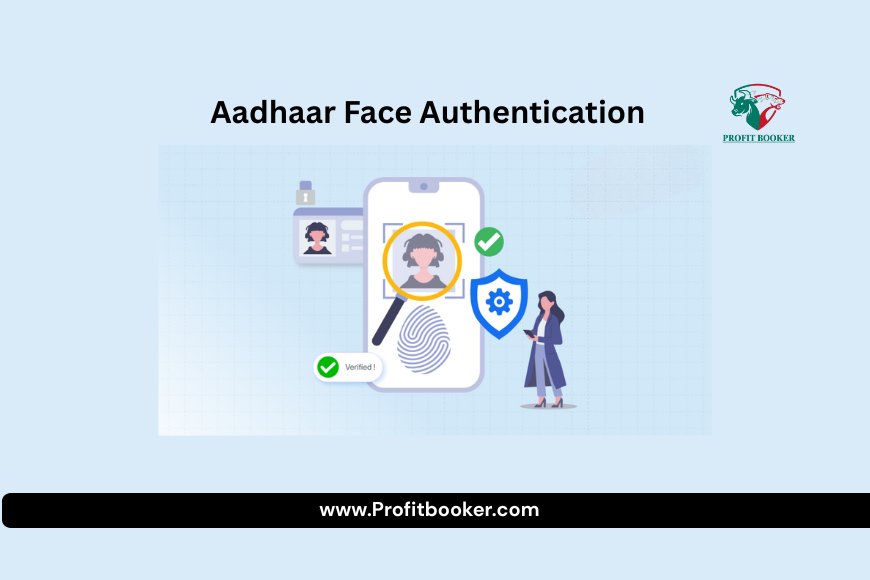Aadhaar Face Authentication in Banking – How IPPB is Changing the Game in 2025
India Post Payments Bank (IPPB) has introduced Aadhaar-based face authentication for seamless, contactless banking across India. Customers can now verify their identity simply by looking at a camera—no PINs, OTPs, or fingerprints required. This service benefits elderly, differently-abled, and rural users, making transactions faster and more accessible. Backed by UIDAI’s secure technology and RBI’s updated KYC norms, it ensures privacy, accuracy, and inclusivity. With IPPB’s vast postal network, services like account opening, balance enquiry, fund transfers, and bill payments are now easier than ever. Aadhaar face authentication marks a major step towards digital and inclusive banking in 2025.

Introduction – Banking with Just Your Face!
Imagine doing banking without remembering PINs, entering OTPs, or struggling with fingerprint scanners. Now, with Aadhaar-based face authentication, India Post Payments Bank (IPPB) has made this possible.
Launched nationwide in August 2025, this technology lets you verify your identity just by looking at a camera — whether you’re at a post office, using an IPPB agent’s device, or availing doorstep banking.
This guide explains:
-
What Aadhaar face authentication is
-
How IPPB uses it
-
Who benefits most
-
How it works step-by-step
-
Safety, privacy & future developments
1. What is Aadhaar Face Authentication?
Aadhaar is India’s 12-digit unique ID, issued by the Unique Identification Authority of India (UIDAI). It’s linked to biometric data (fingerprints, iris scans, face photo) and demographic details.
Face authentication means:
-
A live photo of your face is taken.
-
The system matches it with your Aadhaar database photo.
-
If it matches — you’re verified instantly.
No need for OTPs or fingerprints — it’s fast, secure, and contactless.
IPPB has integrated this UIDAI feature into its digital and doorstep banking services.
2. About IPPB – Banking for Every Indian
Launched in 2018, India Post Payments Bank operates under the Department of Posts. With over 90 million customers, IPPB uses post offices and postal staff to provide banking — especially in rural and remote areas.
IPPB is known for:
-
Aadhaar-enabled Payment Services (AePS)
-
QR code banking
-
Doorstep banking
-
Now — Aadhaar Face Authentication for easy, inclusive access.
3. Why Aadhaar Face Authentication is a Game-Changer
A. Helps Elderly & Differently-Abled
Many elderly customers have faded fingerprints, and some differently-abled users struggle with physical authentication. Face recognition solves these issues effortlessly.
B. No OTP Hassles
No more waiting for OTPs that fail due to poor mobile signal.
C. Fully Contactless
Safe during health emergencies — no touching devices like fingerprint scanners.
D. Boosts Financial Inclusion
CEO R. Viswesvaran calls it “a step towards redefining financial inclusion at scale.” Everyone can now access banking without barriers.
4. How Aadhaar Face Authentication Works at IPPB
Here’s the step-by-step process:
-
Link Aadhaar with IPPB Account – Your account must be Aadhaar-linked.
-
Start Transaction – At a branch, with an IPPB agent, or doorstep service.
-
Face Scan – Look at the device camera; a live image is captured.
-
Matching – Image is verified with your Aadhaar database photo.
-
Transaction Approval – If matched, banking proceeds instantly.
Services you can use with Face Authentication:
-
Account opening
-
Balance enquiry
-
Fund transfer
-
Bill payments
-
Aadhaar-enabled transactions (AePS)
5. RBI & UIDAI’s Role in Enabling This
-
RBI updated KYC rules in June 2025 to allow video KYC, remote onboarding, and biometric verification flexibility.
-
UIDAI provided the tech framework for secure Aadhaar face authentication, ensuring privacy and accuracy.
IPPB’s system is fully UIDAI-compliant and works on agent devices, branch systems, and mobile setups.
6. Who Benefits the Most?
| Group | Benefit |
|---|---|
| Elderly customers | No fingerprint issues |
| Differently-abled users | No need for physical touch or OTPs |
| Rural / doorstep banking users | Works offline with agents |
| During health crises | Fully contactless and safe |
7. Security & Privacy – Is It Safe?
Yes — Aadhaar face authentication is highly secure, but IPPB and UIDAI have safeguards:
-
Liveness Detection – Prevents misuse with photos or videos.
-
No Data Storage by IPPB – Biometric data is not saved locally.
-
End-to-End Encryption – Data is transmitted securely to UIDAI for verification.
-
Fallback Options – OTP or fingerprint available if face match fails.
8. Challenges & Solutions
A. Tech Requirements
Needs good-quality cameras and reliable internet for smooth use.
Solution: IPPB is upgrading agent devices and branch systems.
B. User Awareness
Some customers may be unfamiliar with camera-based authentication.
Solution: IPPB is running awareness campaigns and agent training.
C. Privacy Concerns
People worry about misuse of face data.
Solution: Strict Aadhaar Act compliance and customer consent protocols.
9. Rollout & Adoption in 2025
-
Launched Nationwide: Early August 2025
-
Focus Users: Elderly, differently-abled, rural customers
-
Promotions: Social media campaigns like “IPPB Face Authentication is Now Live!”
-
Media Coverage: Featured by Economic Times, Moneycontrol, The Statesman, Rediff, etc.
IPPB’s large postal network means even remote villages can access this service.
10. The Future – What’s Next?
-
UPI Face Payments: NPCI is exploring PIN-less UPI transactions using face recognition.
-
More Banks Adopting It: UIDAI’s playbook encourages banks to roll out face-based onboarding and KYC.
-
Government Services: Pension, subsidy, and benefit distribution could also use face authentication soon.
11. Customer Impact – Real Stories Coming Soon
While large-scale user stories are still emerging, initial feedback from elderly and rural users has been positive — praising the speed and dignity of face-based banking.
12. Conclusion – Banking Made Truly Simple
Aadhaar Face Authentication by IPPB is not just about tech — it’s about accessibility, dignity, and inclusivity.
With this service:
-
No PINs, OTPs, or fingerprints required.
-
Works anywhere — from post office counters to doorstep services.
-
Makes banking faster, safer, and more inclusive.
As more banks adopt it and technology evolves, your face could soon be the only password you need for banking in India.




